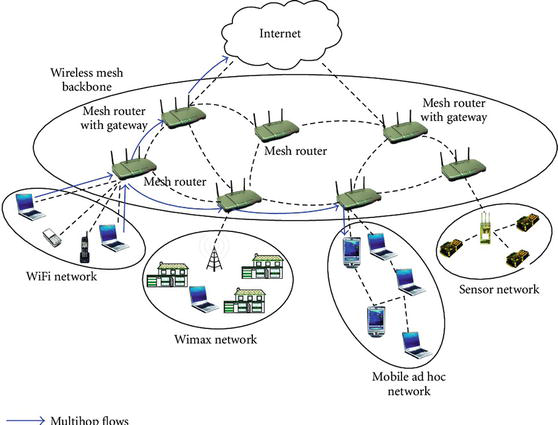Banner

Infographics

intechopen (2018, Nov 27). An Overview of Wireless Mesh Networks [Infographic]
Note: Refer to FCN Lecture 10- Wireless Local Area Network: Slide 28
Online Articles

A wireless local-area network (WLAN) is a group of colocated computers or other devices that form a network based on radio transmissions (rather than wired connections).
Note: Refer to FCN Lecture 10- Wireless Local Area Network: Slide 5
Note: Refer to FCN Lecture 10- Wireless Local Area Network: Slide 12
|
2.4GHz vs 5GHz: The Vital Differences & Takeaways You might have come across the term ‘frequency band’ while reading my guide to purchasing a wireless router. You also must have noticed that are there are two frequency bands; 2.4GHz and 5GHz. |
Note: Refer to FCN Lecture 10- Wireless Local Area Network: Slide 22
LinkedIn Learning
Cisco Networking Foundations: Wireless Networks, Services, Security, and Virtualization by Kevin Wallace
Certified Internetwork Expert and instructor Kevin Wallace as he shows you the skills you need to know to manage network services, network security, wireless networks, and virtualization.
Login here before clicking on the links to the videos or courses below.
Note: Refer to FCN Lecture 10- Wireless Local Area Network
Videos
Wireless Network Devices - CompTIA Network+ N10-006 - 2.7 by Telecom Training
In this video, you’ll learn about wireless bridges, wireless routers, roaming, wireless controllers, and more.
Note: Refer to FCN Lecture 10- Wireless Local Area Network: Slide 10
Wireless Standards - N10-008 CompTIA Network+ : 2.4 by Professor Messor
The 802.11 wireless standards have changed the way we network. In this video, you’ll learn about six popular 802.11 standards, speeds, frequencies, and more.
Note: Refer to FCN Lecture 10- Wireless Local Area Network: Slide 18
Wireless Connection Setup with Singtel - Dual-Band Wireless Router by Singtel
Instructional how-to video from Singtel on setting up both 2.4 and 5.0GHz wireless network at home.
Note: Refer to FCN Lecture 10- Wireless Local Area Network: Slide 21
What is Mesh Wi-Fi? by Techquickie
Mesh Wi-Fi systems that use several nodes instead of one wireless router are becoming popular. Are they better than traditional setups, and how do they work, anyway?
Note: Refer to FCN Lecture 10- Wireless Local Area Network: Slide 29

